Paintings, portraits, drawings and sculptures filled the Kinsey Gallery on Feb. 4 with color and imagery, displaying the talent of some of Seattle University’s staff and faculty.
The gallery will showcase the artistic diversity found in the visual arts program at Seattle U.
Images and figures resembling people, animals, and places fill the canvases on the walls. Other pieces display digital prints of everyday sights seen in everyday life, like Operations Manager Em Olson’s piece “Commute//Hold.”
Among the paintings and digital prints are small soap sculptures of ordinary items such as a couch, chair, and shovel.
The soap sculptures titled “Angled Sofa,” “Shovel” and “Armchair” by Assistant Professor Father Trung Pham S.J., might seem like ordinary objects but they have a much deeper meaning to the artist.
“What inspired me was the common object, like ordinary object in our daily lives, like a chair, and a sofa,” said Pham. “I am very fascinated with these objects because I reflect back to my immigrant experience where I came to the United States from Vietnam 26 years ago.”
Pham described how, as an immigrant, he finds his identity through common objects by relying on their familiarity and stability.
“I love carving them now but also I reflect back on the experience in that moment when my life was fluctuating.” said Pham. “I moved there to here because of the sponsorship of the U.S. government. After the fall of Saigon and the Vietnam War, all the soldiers were captured and put in prison. My dad was in prison for seven years after the war.”
After Pham’s father was released, the U.S. government sponsored his family to come to the United States. This caused inner turmoil for Pham, as he was only 15 at the time.
“Everything changes. Leaving familiar things behind, like loved ones, friends, new culture, along with learning a new language.” He recalled yearning to see his grandmother, not having friends and crying on the inside.
In this hardship, one of the only sources of comfort were the common instruments and tools around him, such as the bathtub, sofa, chair, shovel and vacuum cleaner.
“I see them everywhere, but you never notice until everything else changes,” Pham said.
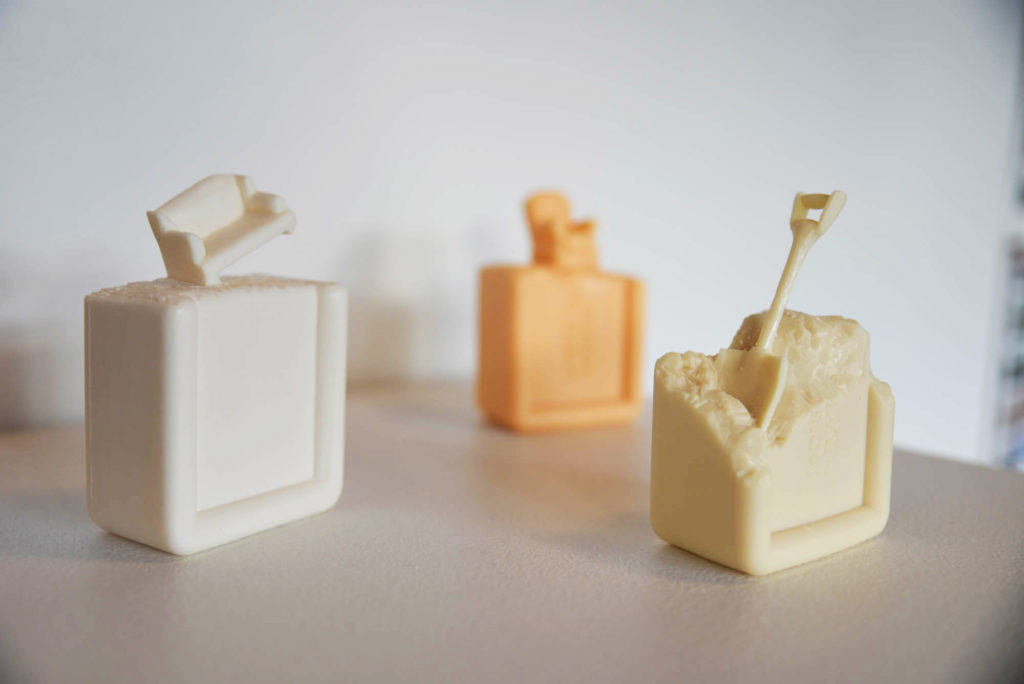
Professor Trung Pham’s sculpture piece, “Angled Sofa, 2016 Shovel, 2016 Armchair, and 2016 bar soap”.
No matter where Pham went in his life, he always noticed the same objects around him. They gave him stability during his uprooted experience as an immigrant.
“You want to focus on the familiar things around you. I found comfort and stability and that is something I consciously cling to.”
Adjunct Professor Dawn Cerny took inspiration from Ernest Hemingway and theater. Her pieces, “Exterminating Angel,” “A Borrowed Pain” and “Upon a Chair in a Waiting Room,” are small exercises in understanding the kinds of narratives that can be constructed through the arrangement of objects and bodies in space.
“I use these kinds works on paper to expand and inform the way that I understand color as an additional character one can manipulate relationally,” said Cerny.
She thought of these exercises like Hemingway’s six word short stories: a situation where you force yourself to make formal and representational choices economically that create a tension between what is represented and what is not.
“They are cinematic medicine ball routines that shape my larger projects.” Adjunct Professor Gretchen Bennett found interest in daily experiences that seem heightened and poignant with her piece, “Messenger.”
“I make color pencil drawings working with source materials like personal photographs and video stills,” Bennett said. “I think they first seem to be photo realistic rendering but they’re actually tracking my personal daily interventions, moments and experiences and observations.”
Bennett stated that her colored pencil drawings explore personal moments that might resonate in a bigger way for more people than just her.
“They explore personal and historic memory in the context of everyday.”
When Bennett was working on these drawings, she would notice daily moments that looked normal, but also seemed a little strange as well. She would then take a picture of that moment in case she was inspired to draw it. In this case, it was her husband leaving for work early in the morning.
“While it’s figurative, it’s also abstract enough for it to resonate with someone outside myself or my own experience,” Bennett said. “I try to pick things that are not particular to my experience I think intuitively I pick things that could be speaking to anybody’s daily experience.”
To give off this effect, Bennett used a special technique that gives off a shimmering effect to the drawing.
“When I use the color pencils I pick a rain like mark, meaning that there are gaps between each mark,” she said. “So when you, the viewer, are looking at it and move from side to side the space between the marks changes the way you see the drawing.”
This effect makes the viewers feel that they can enter the space of the drawing, making it accessible yet mobile.
All of these pieces, along with a variety of others can be found in the Admissions Building until March 31. Stop on by to experience the inner minds and creativity of Seattle U’s faculty and staff.
The editor may be reached at
[email protected]






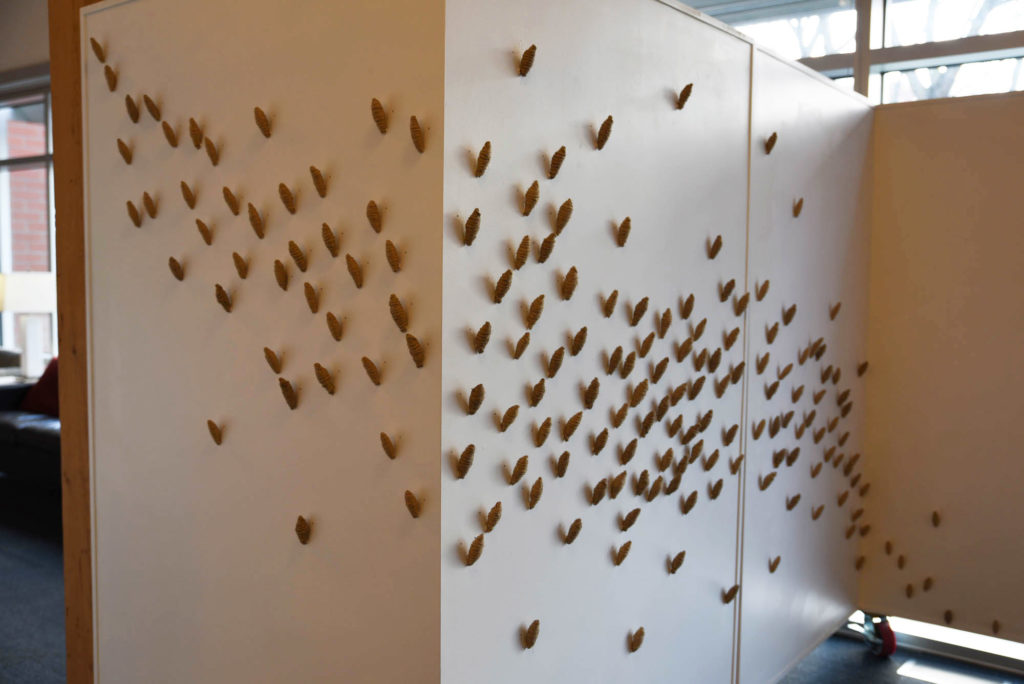

![Civil War is A24’s Political Blockbuster that Exceeds Expectations [REVIEW]](https://seattlespectator.com/wp-content/uploads/2024/04/CivilWarReviewWeb-1-1200x791.jpg)
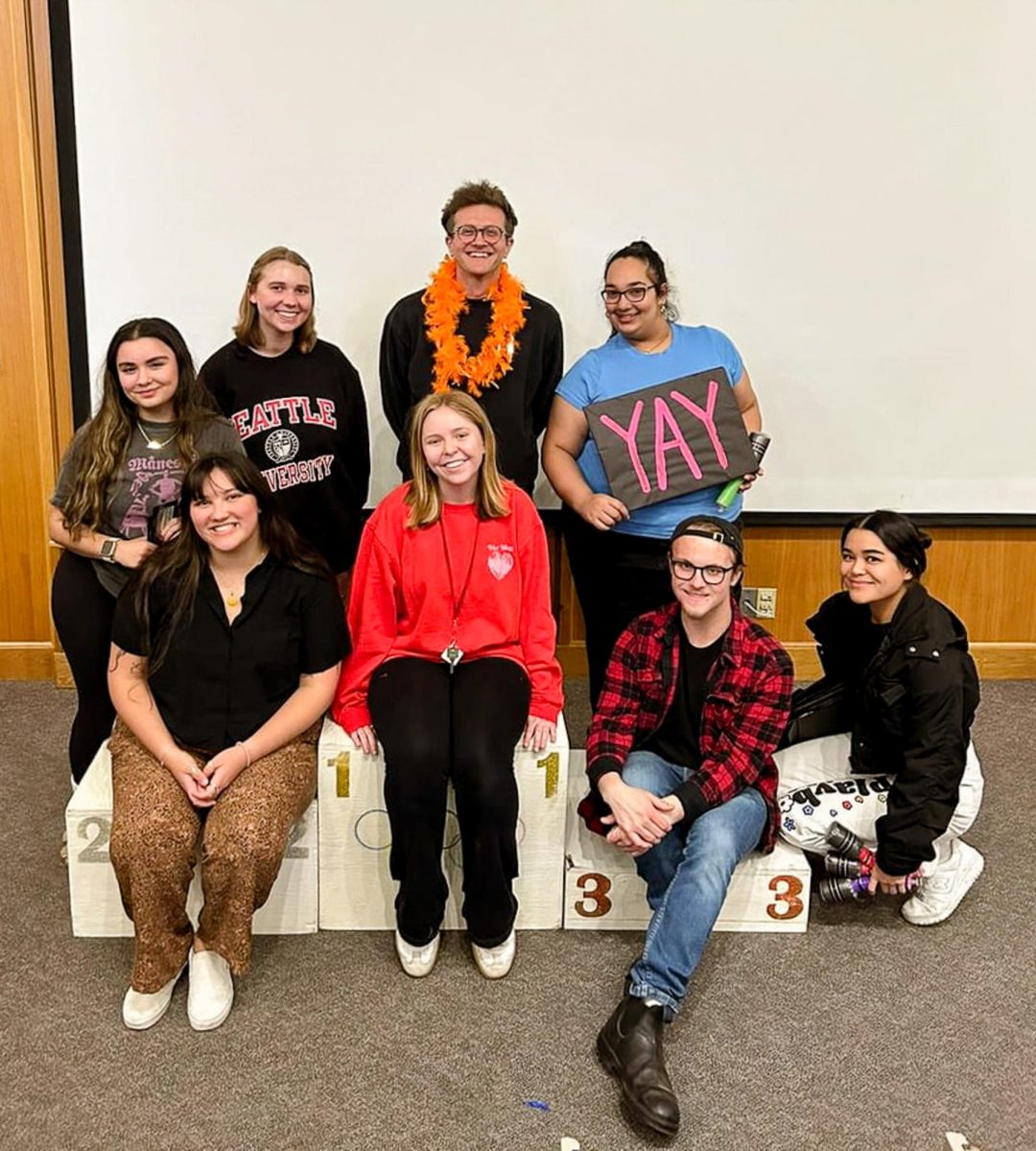
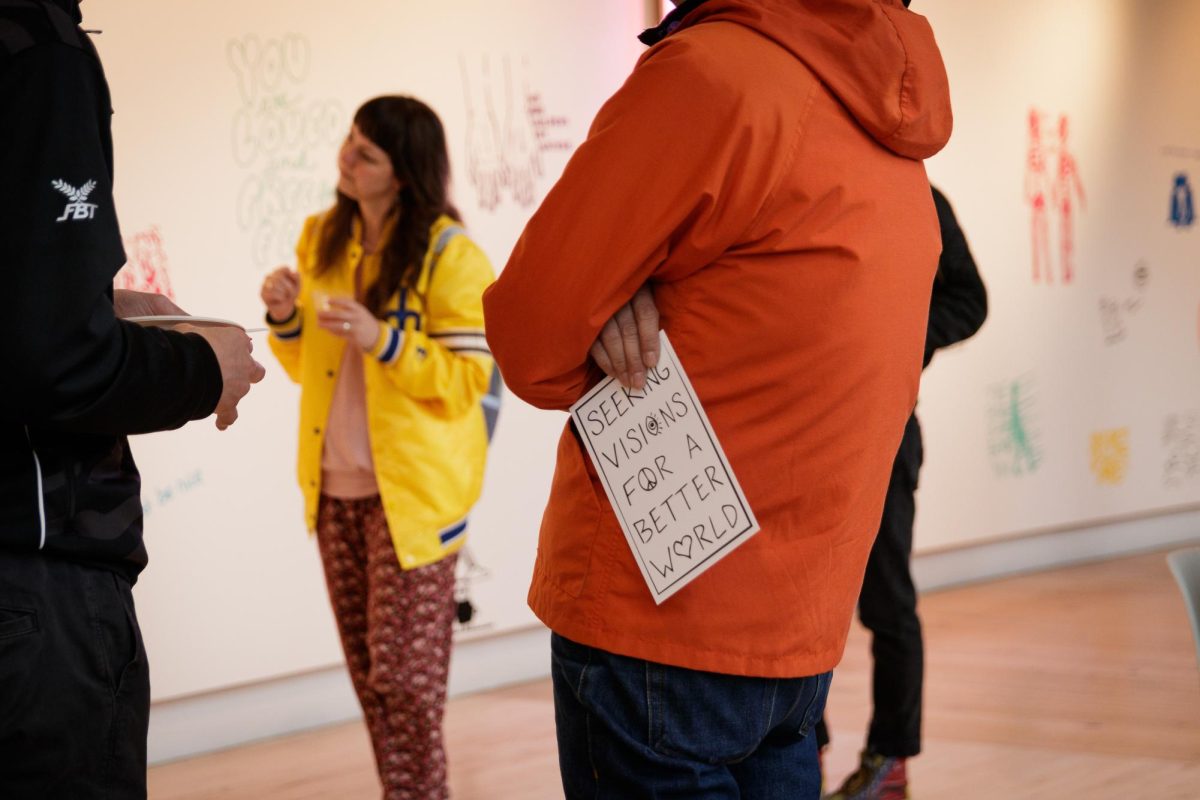
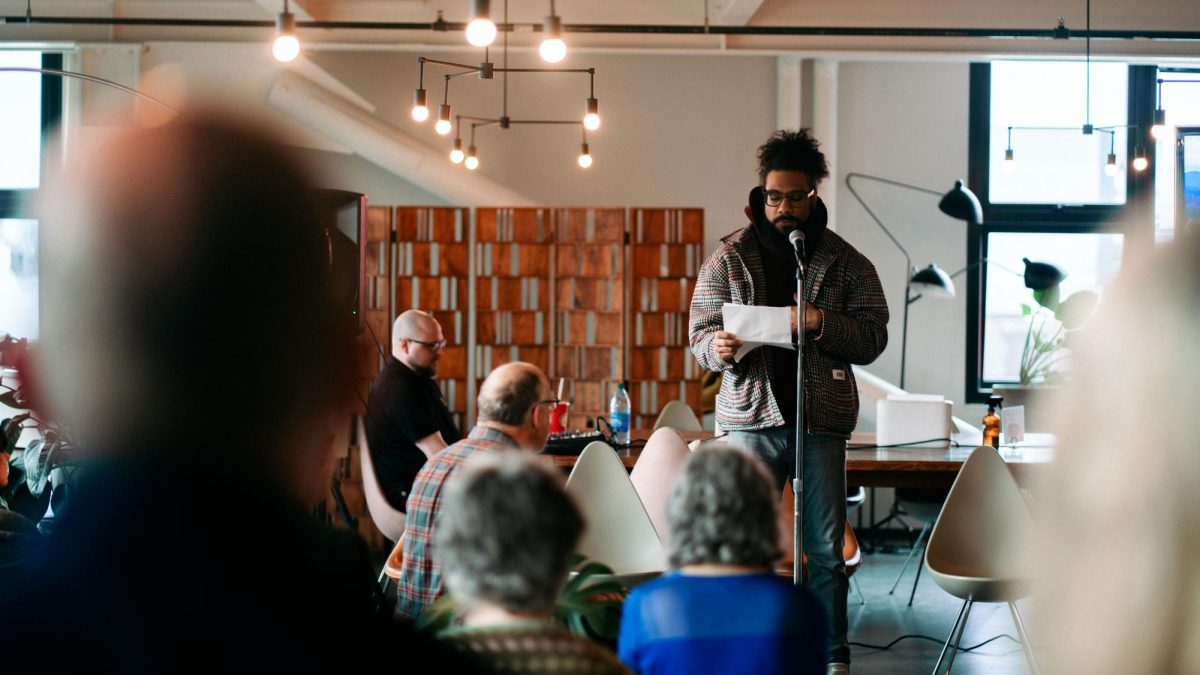
![Jordan Ward [REVIEW]](https://seattlespectator.com/wp-content/uploads/2024/04/ward_1-1200x800.jpg)